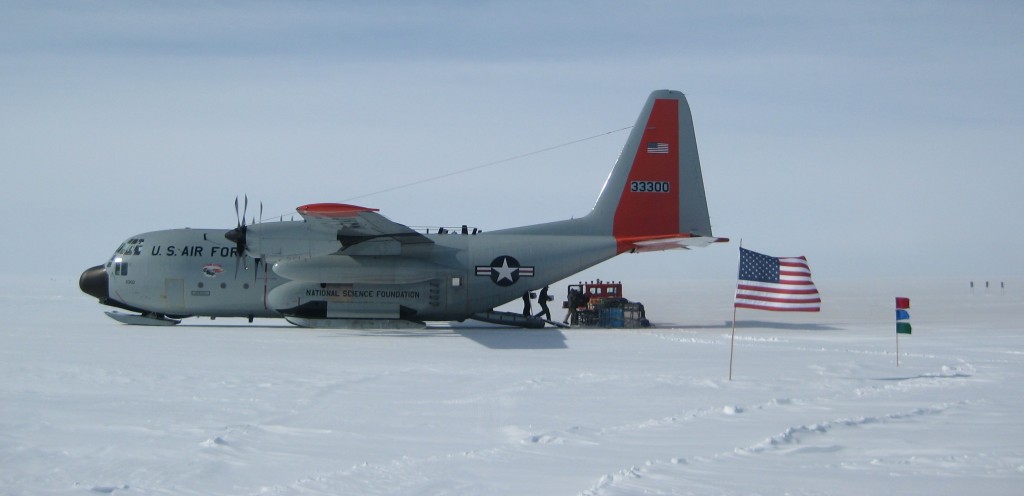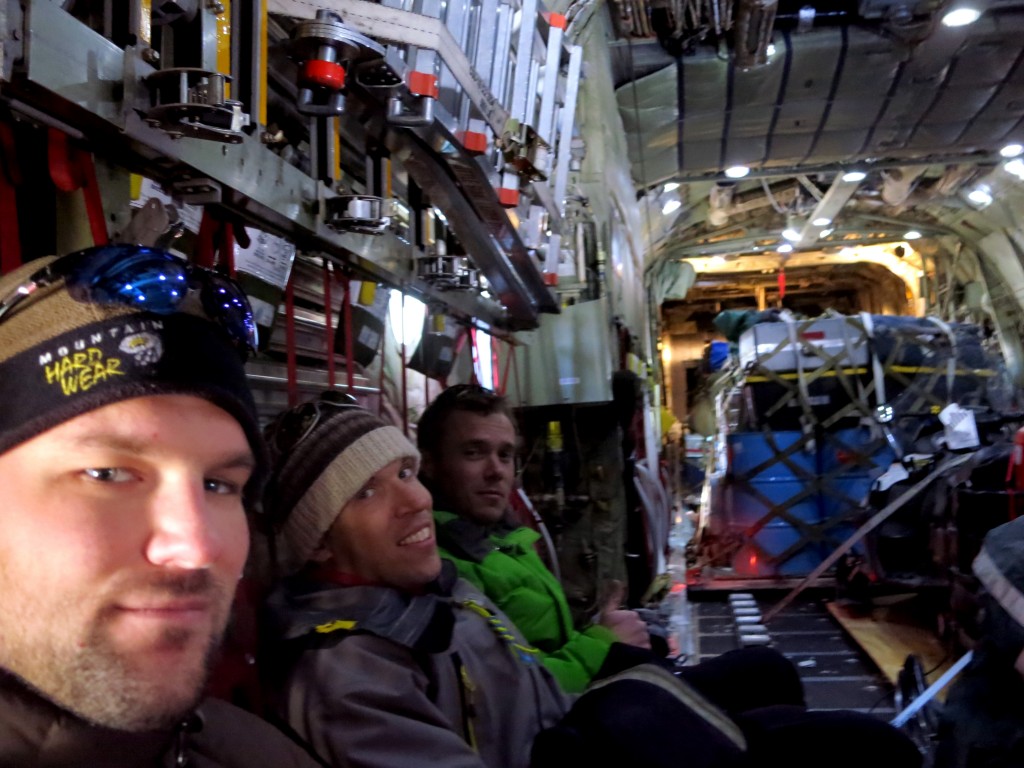I wish Canada would seriously consider developing a stronger civilian-military partnership in the areas of Arctic science and defense. The highly efficient partnership between the US National Science Foundation (NSF) and the US Air National Guard (ANG) in Greenland provides an impressive example.

A US Air National Guard ski-equipped C-130, here dropping off researchers and equipment at Dye-2 on the Greenland Ice Sheet, costs approximately CAD 9000 per flight hour.
The 109th ANG wing essentially transports scientists and their equipment from the continental US to research bases in Greenland, and sometimes even on to the ice sheet, in return for full-cost payment from the NSF. The NSF-ANG full-cost special airlift arrangement (SAAM) delivers one C-130 transport plane flight hour for about CAD 9000.
In Canada, by comparison, High Arctic researchers generally travel to the main Polar Continental Shelf Project (PCSP) research base in Resolute, Nunavut, via commercial flights. A single Ottawa to Resolute round-trip ticket is about CAD 4000. But this ticket only comes with a 32 kg baggage allowance, and researchers are generally heavy packers. With checked bag penalties reaching almost CAD 200, it is easy to spend another CAD 1000 on baggage over above ticket price. Often, there is also an institutional overhead of about 40% on commercial purchases, meaning funding agencies ultimately pay close to CAD 7000 to get a single Canadian researcher and their equipment to Resolute; not far off a C-130 flight hour.
Flights to Resolute might seem like an esoteric topic, but Canada sends a lot of researchers there. The PCSP supports approximately 850 field researchers each year. That means at least CAD 3.4M in the direct cost of commercial air tickets, or closer to CAD 6.0M when indirect (overhead and baggage) costs are factored in. The NSF-ANG partnership seems to suggest that Canada could be getting more bang for these bucks. For example, while commercially flying ten researchers and equipment roundtrip between Ottawa and Resolute is about CAD 70K (incl. indirect costs), the ANG can fly more than twice that payload on the same route for about 81K. The ANG can even land that payload “open field” far from any airport.

Researchers and equipment in a US Air National Guard C-130, en route to the Greenland Ice Sheet Dye-2 ski-way, during the Arctic Circle Traverse 2013 (ACT13) campaign.
Adopting a civilian-military partnership for Canadian Arctic research would clearly improve the return on expenditure for Canadian research agencies, while also providing an almost zero-cost mechanism for increased military presence in the Canadian Arctic, which translates into enhanced standby transport or search-and-rescue capacity. The NSF-ANG partnership also shows that in addition to producing tangible benefits, “soft” benefits associated with direct, widespread, and meaningful interaction between military and civilian personnel can be cultivated.
So, I am delighted to hear that the Canadian military is learning how to build ski-ways on which ANG C-130s can land. For an Arctic researcher like myself, the next ideal step would be getting skis on a Canadian C-130 (technically converting it into an LC-130), and then getting research agencies to pay the military to fly that ski-equipped C-130 to some useful field sites throughout the Canadian High Arctic!
My latest: An appeal for more military support for #Arctic science in #Canada:https://t.co/82OjMcz6dz pic.twitter.com/ALQxN2w9c7
— William Colgan (@GlacierBytes) April 14, 2016
